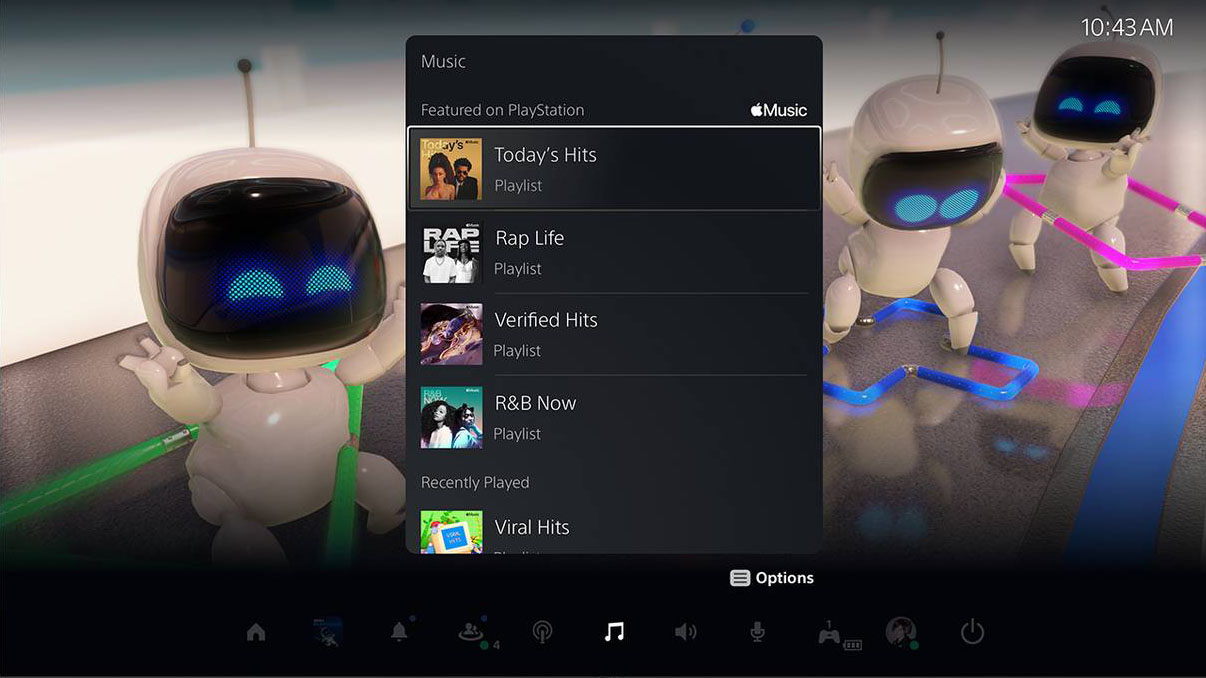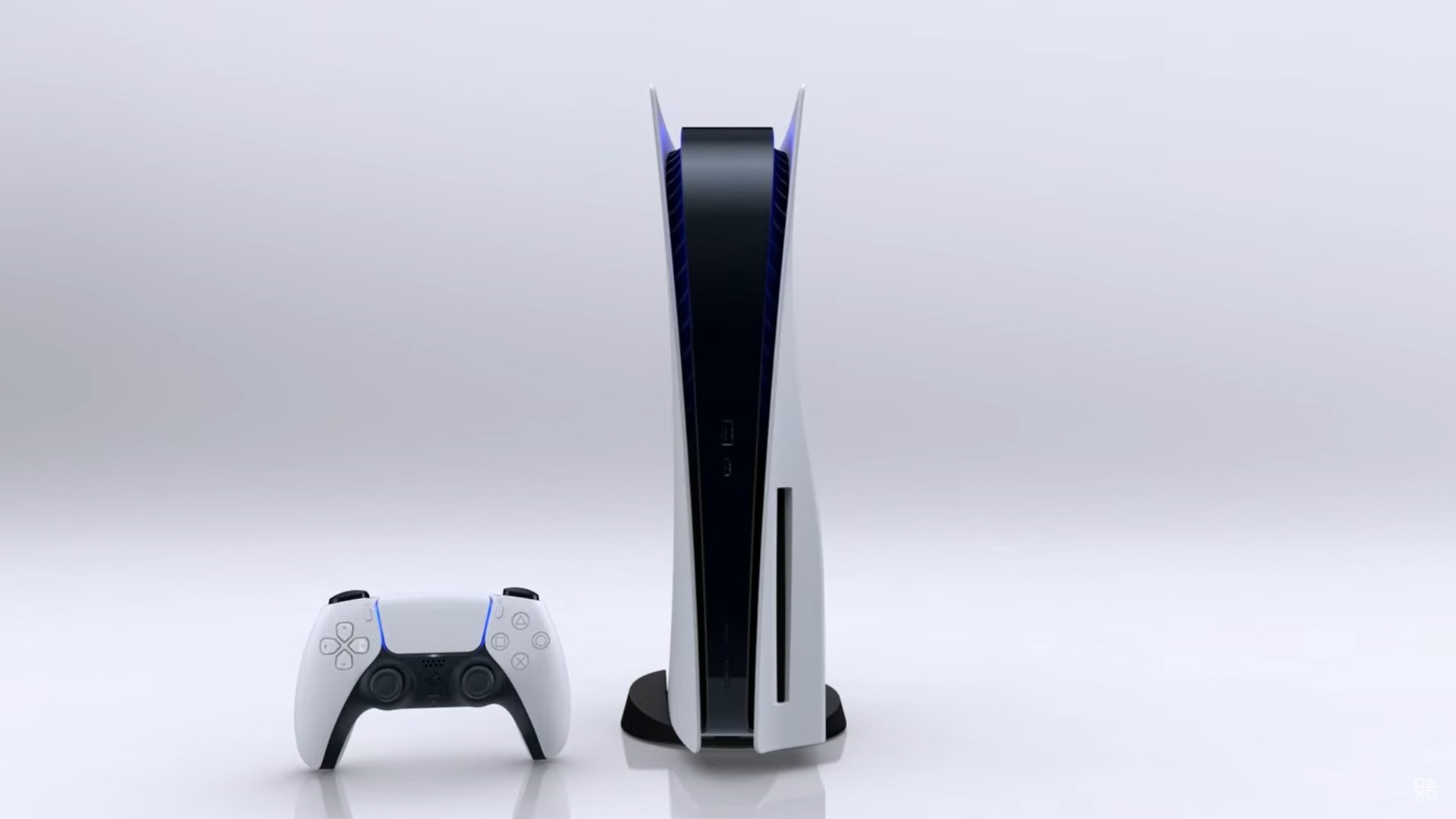Apple Music on PS5 is great if you're bored of Spotify – but its best feature is missing
Apple Music has landed on the PS5, but it's a bit of a disappointment

Apple Music has arrived on the PS5, making it the first console to support the company's music streaming service. For the past six years, PlayStation users have been limited to Spotify if they wanted to choose their own music to soundtrack their gaming session.
Before or during a game, you can now launch the Apple Music app by pressing the PS button on your controller to access the Control Center and selecting the Music Function card.
You can then find recommended songs for the game you're currently playing, choose from your own personal playlists or one of Apple Music's curated playlists, tune in to Apple Music Radio, or browse the streaming service's catalogue of over 90 million songs.
You'll also be able to watch music videos in 4K in the Apple Music app – and if you navigate outside of the app, the music will keep playing.

What happened to Spatial Audio?
However, while it's great to finally see an alternative to Spotify on the PlayStation 5, it doesn't look like there's any support for Apple Music's standout feature: Spatial Audio.
Twitter users who are otherwise excited for the streaming service to come to the PS5 have expressed their disappointment at the omission:
It would be great if the PS5 supported Dolby Atmos. That would be an exceptional feature using the PS5 headset/sound system to listen to Dolby Atmos tracks on Apple Music while playing games. Make it happen!October 27, 2021
While the new, native menu integration is nice, the PS5 app currently does not support @Dolby Atmos, which is easily Apple Music's best differentiator. There's no way to brute force it in, either, a la the Blu-ray app. Womp womp. https://t.co/8mw88oEDI5October 27, 2021
Apple’s Spatial Audio technology takes 5.1, 7.1 and Dolby Atmos content and applies directional audio filters, placing sound in a 3D sphere. This makes it feel more immersive, as if the audio is coming at you from every angle.
Sign up for breaking news, reviews, opinion, top tech deals, and more.
We've reached out to Apple and Sony to ask why Spatial Audio isn't supported on the PS5 – but we can hazard a few guesses in the meantime.
For starters, the PS5 doesn't actually support Dolby Atmos streaming – something that was thought to be a result of an exclusivity deal between Dolby and Microsoft for the Xbox Series X/S, though both parties refuted those claims.
Instead, the PS5 relies on Sony's proprietary Tempest 3D Audio engine, which isn't compatible with Atmos or DTS:X – though the PS5 will output Atmos-encoded audio from Blu-ray discs.
- Read our PS5 review
Another reason why Apple Music may not support Spatial Audio on the PS5 is the console's limited Bluetooth support.
To enjoy Spatial Audio, you need a pair of AirPods 3, AirPods Pro, AirPods Max, or a pair of compatible Beats headphones like the Beats Studio Buds – these headphones and wireless earbuds contain gyroscopes and accelerometers that track the orientation of your head and ensure the different elements of a track are positioned appropriately.
To use wireless headphones with the PS5, you need to hook up a Bluetooth adaptor – so, you'll need to fork out for one of those, as well as a pair of compatible Apple or Beats headphones.
Perhaps Sony felt that these were too many hurdles for its users to jump through in order to use Spatial Audio in Apple Music. After all, its 3D Audio engine works with any headphones, as well as via your TV speakers, a 2.1, 5.1, or 7.1-channel speaker setup.
Still, the lack of Spatial Audio support probably won't do Apple Music any favors if it's hoping to lure PS5 users that have typically used Spotify for music streaming – in our opinion, Spotify still has a superior search engine and better playlist curation than Apple.
As for other consoles, it doesn't look like Apple Music is coming to the PS4. There's also no word yet on whether the Xbox Series X/S will get Apple Music support soon – but as the consoles support Apple TV Plus, we wouldn't be surprised if it arrives in the future, and with proper Spatial Audio support.
- Where to buy a PS5: all the retailers to check for the Sony console

Olivia was previously TechRadar's Senior Editor - Home Entertainment, covering everything from headphones to TVs. Based in London, she's a popular music graduate who worked in the music industry before finding her calling in journalism. She's previously been interviewed on BBC Radio 5 Live on the subject of multi-room audio, chaired panel discussions on diversity in music festival lineups, and her bylines include T3, Stereoboard, What to Watch, Top Ten Reviews, Creative Bloq, and Croco Magazine. Olivia now has a career in PR.